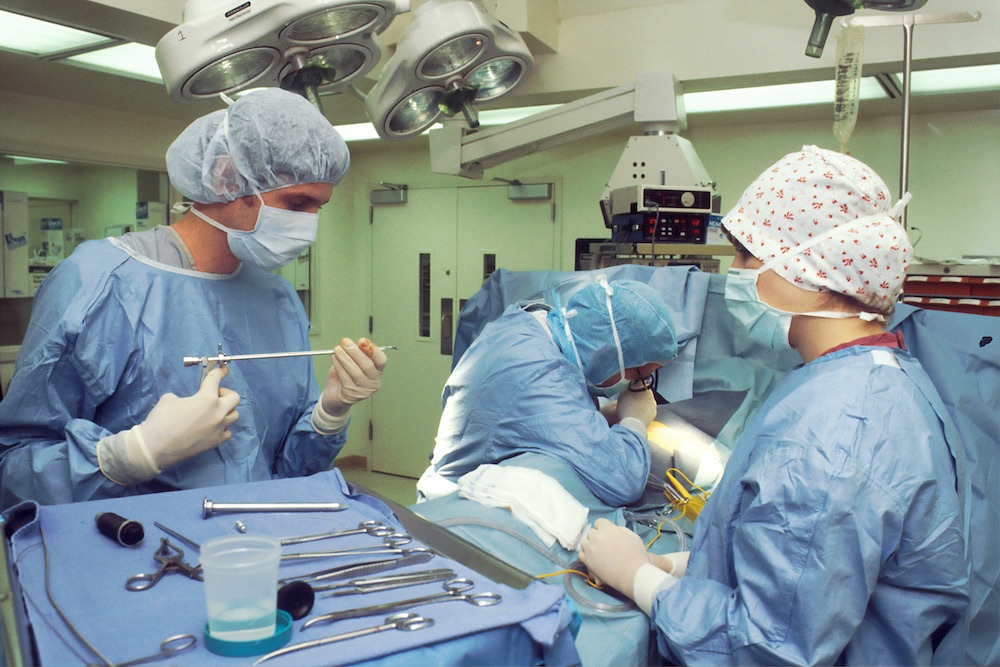Today we take a side step from clinical simulation to consider some of the latest updates from the world of Patient Safety. With the same goal to improve outcomes, the patient safety sector has been driving serious global results through powerful organizations like the Patient Safety Movement Foundation, key research updates, and expert considerations from the newest generation of healthcare providers. Check it out!
BMJ Opinion: The medical profession is breaking its psychological contract with medical students and trainees (Hoff, Dopson, Mitra): Psychological contracts exist between medical trainees and their training institutions that involve a series of expectations and implied promises. There is evidence that in the eyes of medical trainees such expectations and implied promises are being violated given current high levels of burnout, career regret, and psychological distress observed within their cohort. Too many early career violations of perceived promises and expectations produce doctors who think in a more self-interested, transactional, and short-term way about their careers. Implied promises can be general, like expecting to be treated fairly, or more specific, such as not being given too high a patient workload. Psychological contracts are subjective; this makes them more likely violated when people think their expectations have not been met, whether it is objectively so.
We believe that too many medical students and young doctors at present experience psychological contract violations with the institutions responsible for training them. The literature suggests that negative psychological states like burnout, distress, and depression are evident in physician trainees during their foundational years implying that psychological contract violations are occurring from the first day of medical training, in systems as varied as the United States, Canada, and the United Kingdom. Meaningful percentages of physicians leaving residency training in the U.S. already express regret for choosing a medical career. The medical training culture still contends with issues of mistreatment, sexism, and exposure to unprofessional and abusive behavior.
Despite recent efforts at small-scale reform, medical training remains defined by a rigid curriculum focused on “book smarts” and high-stakes, standardized testing that gives many students the perception of a one-size-fits all training experience that is somewhat joyless and overly routinized. Research shows that the medical training environment still has too many poor role models; promotes hyper competition among students; avoids a heavy focus on personal growth; and works off punitive feedback systems centered on blame.
Creating greater trust from day one is a multi-faceted endeavor. Broadly speaking, it requires meaningful changes in how trainees are recruited and selected for participation in a medical school or residency programs. It requires reform to the negative cultural elements to which trainees are exposed. It must involve transparency in the narrative offered by the training institutions related to what trainees can expect in the way of treatment, education, and support once they gain participation in the organization. This way trainees can make choices that are more informed and potentially adjust the nature of what they believe the organization owes them. Training programs must better assess both formally and informally, what trainees expect and feel they deserve from training, so they are more aware of how to understand and fulfill the latter’s perceived obligations. Through these adjustments, medical educators and physicians-in-training will understand and believe in one another more strongly, forging the kinds of psychological contracts that produce better physicians. Read the full opinion on BMJ here.
Patient Safety Curriculum from Patient Safety Movement Foundation: The Patient Safety Movement Foundation will place significant energy into Patient Safety Curriculum & Education development for healthcare professionals from 2018-2020 via their Actionable Patient Safety Solutions (APSS). They have assembled a Workgroup to create a core curriculum that can be applied across all health professions. Dr. Steven Scheinman and Dr. Margrit (Peggy) Shoemaker, from Geisinger Commonwealth, Co-Chair the Patient Safety Movement Foundation’s Patient Safety Curriculum Workgroup.
This dedicated group is in the midst of developing core curricula which will include the following elements: Ownership of patient safety and quality embedded within the professional identity formation for all health caregivers; Core curriculum common to all health professions. The fundamental elements of the core curriculum will include: Leadership training Interprofessional team-based models Definition of competencies to be achieved, outcomes to be assessed and milestones (which will be specialty-specific) to be identified for each stage of one’s professional career (UME, GME and unsupervised practice, across all professions). Focusing beyond care of the individual patient to address systems of care. Learn more here!
2020 World Patient Safety, Science & Technology Summit (March 5-7, 2020): The 8th Annual World Patient Safety, Science & Technology Summit is co-convened with the International Society for Quality in Health Care (ISQua) and American Society of Anesthesiologists (ASA), and the European Society of Anesthesiology (ESA) and will bring together all stakeholder groups to discuss novel solutions to the leading challenges facing hospitals today. We invite international hospital leaders, medical and information technology companies, the patient advocacy community, public policy makers and government officials to join us for our 8th Annual event in 2020 and be part of this momentous event as we share our plans post-2020. The Summit featured keynote addresses from public figures, patient safety experts and plenary sessions with healthcare luminaries, and patient advocates, as well as announcements from organizations who have made their own commitments to reach the Patient Safety Movement Foundation’s goal of ZERO preventable deaths by 2020. President Bill Clinton is this year’s keynote! Learn more here!
JAMA: “Association Between Physician Depressive Symptoms and Medical Errors” (Pereira-Lima, Mata, Loureiro, et al): In this systematic review and meta-analysis of 11 studies involving 21 517 physicians, physicians with a positive screening for depression were highly likely to report medical errors. Examination of longitudinal studies demonstrated that the association between physician depressive symptoms and medical errors is bidirectional. This study found that physician depressive symptoms were associated with medical errors, highlighting the relevance of physician well-being to health care quality and underscoring the need for systematic efforts to prevent or reduce depressive symptoms among physicians. Results of this study suggest that physicians with a positive screening for depressive symptoms are at higher risk for medical errors. Further research is needed to evaluate whether interventions to reduce physician depressive symptoms could play a role in mitigating medical errors and thus improving physician well-being and patient care. Read the full research JAMA publication here.
Foundation for the Innovation and Development of Health Safety White Paper: Challenges and Opportunities for the Improvement of Health Systems: The Foundation’s new white paper addresses the three most common incidences of medical error. According to a meta-analysis of journal articles on medical errors: (1) drug management incidents made up on average 25%, the highest proportion of preventable patient harm followed by; (2) incidents related to surgical procedures and healthcare infections, and finally; (3) diagnoses. Preventable medical errors contribute substantially to healthcare cost, including higher health insurance costs per person expenses. Medical errors cost approximately $20 billion a year and remain a serious health problem and a leading cause of death. Software solutions have demonstrated higher effectiveness in addressing these issues versus the implementation of human processes. Download your copy here.
Forbes: Taking a Stand to Advance Patient Safety (Garrett): Without people and highly trained personnel, healthcare cannot be safely delivered to the patients who we are responsible for serving. Leaders, managers and supervisors should always begin their commitment and focus on the people actually delivering clinical care. These highly skilled professionals must be provided role-specific, competency-driven training and clinical education at the time of hire, annually and anytime the equipment or process changes. This will ensure that the team is always highly functioning and synergistic with a shared patient safety model. A daily focus on quality improvement related to clinical processes is necessary. All too often, healthcare facilities have specific areas of intense focus every month, but in reality, a constant approach to ensuring patient and team safety is a much better use of time, resources and finances and can provide more sustainable results that will positively impact patient safety. Key processes such as medical device reprocessing, medication safety and basic procedural safety checks, such as time-outs, are all high-stakes clinical processes with the potential to negatively impact patients if not properly followed each and every time. Read the full article on Forbes.
BMJ: Association of open communication and the emotional and behavioural impact of medical error on patients and families: state-wide cross-sectional survey (Prentice et al): How openly healthcare providers communicate after a medical error may influence long-term impacts. We sought to understand whether greater open communication is associated with fewer persisting emotional impacts, healthcare avoidance and loss of trust. Cross-sectional 2018 recontact survey assessing experience with medical error in a 2017 random digit dial survey of Massachusetts residents. Two hundred and fifty-three respondents self-reported medical error. Respondents were similar to non-respondents in sociodemographics confirming minimal response bias. Time since error was categorised as <1, 1–2 or 3–6 years before interview. Open communication was measured with six questions assessing different communication elements. Persistent impacts included emotional (eg, sadness, anger), healthcare avoidance (specific providers or all medical care) and loss of trust in healthcare. Logistic regressions examined the association between open communication and long-term impacts. Negative emotional impacts from medical error can persist for years. Open communication is associated with reduced emotional impacts and decreased avoidance of doctors/facilities involved in the error. Communication and resolution programmes could facilitate transparent conversations and reduce some of the negative impacts of medical error.






